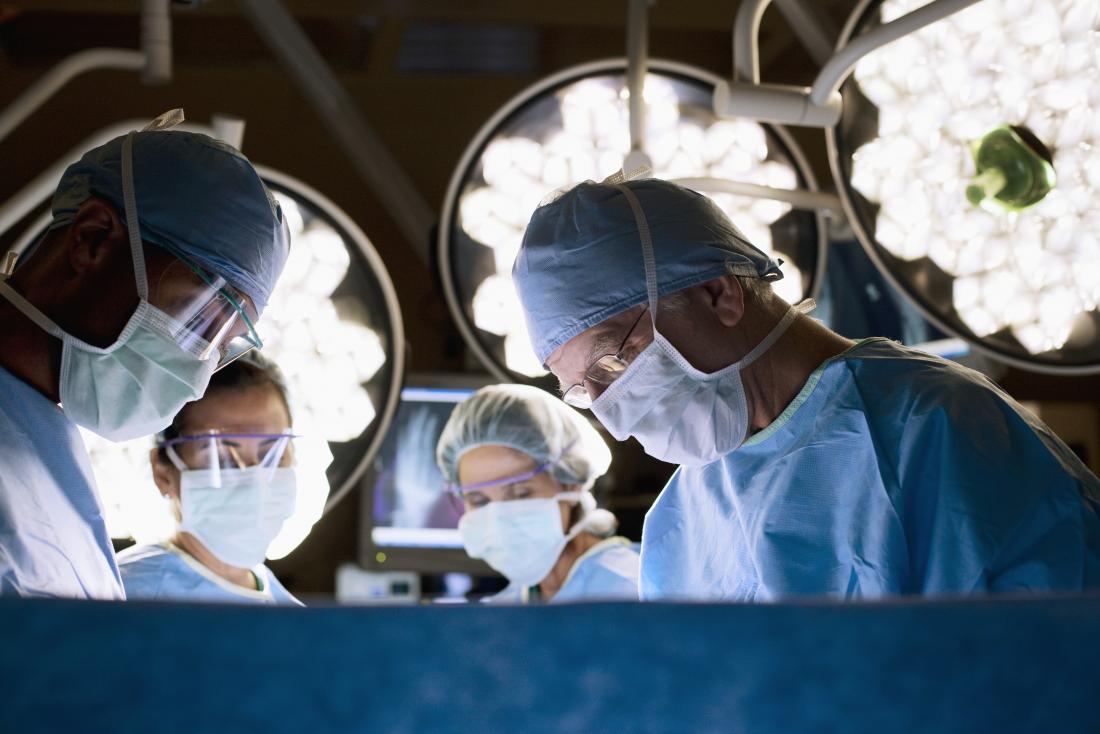The thyroid plays an important part in the body’s functions. It produces hormones that circulate throughout the body, regulating a person’s temperature and metabolism.
It also supports the heart and digestive system and helps maintain muscle control and bone health.
A doctor may recommend thyroid gland removal for many reasons. In this article, learn about these reasons and what to expect from the procedure.
Uses

A thyroid nodule may require surgical removal.
A person is most likely to undergo thyroid removal surgery if:
- A nodule on the gland is cancerous or may become cancerous. Thyroid nodules are usually benign, but a doctor will take a biopsy to check.
- A thyroid nodule or the whole gland is enlarged and causing dangerous or bothersome symptoms, such as trouble swallowing, difficulty breathing, or changes to the voice.
- A person has an overactive thyroid (hyperthyroidism) that does not respond to other treatments. Graves’ disease or toxicity in one or more nodules can cause hyperthyroidism.
Types
There are a few types of thyroid removal surgery. A doctor will recommend a certain type, after considering a range of factors, including the condition of the thyroid and a person’s overall health.
Types of thyroid removal surgery include:
- Hemithyroidectomy, or lobectomy. This involves removing one lobe (or half) of the thyroid. A doctor may recommend this surgery if a nodule or low-risk thyroid cancer is limited to one side of the thyroid.
- Isthmusectomy. This surgery removes the isthmus, a piece of tissue that connects the two lobes of the thyroid. Small tumors on the isthmus may only require an isthmusectomy.
- Total thyroidectomy. This involves removing the entire thyroid gland. Some cases of thyroid cancer, bilateral thyroid nodules, and Graves’ disease require a total thyroidectomy.
Procedure
A doctor will give a person instructions about how to prepare for thyroid removal surgery. This usually involves not eating or drinking for a set period before the procedure.
Thyroid removal surgeries take place under general anesthesia, so a person will be asleep and will not feel any pain.
Most of the time, the surgeon will begin by making a small incision in the neck, taking care to avoid the vocal cords and windpipe. The surgery will last about 2 hours.
Afterward, the person will wake up from the anesthesia and recover in the hospital. Hospital staff will monitor them closely for any breathing difficulties or bleeding.
A person can often go home on the same day as the surgery. Otherwise, the doctor may ask them to stay overnight for monitoring.
Risks and side effects

A doctor may prescribe hormone replacement medication after thyroid removal surgery.
When an experienced surgeon performs thyroid removal surgery, the risk of serious complications is low. However, all surgeries involve some risks.
Risks of thyroid removal include:
- infection
- bleeding, which occurs in the first few hours after surgery
- injury to the nerves that control the voice box
- injury to a parathyroid gland
The four parathyroid glands help control the amount of calcium in the blood.
After total thyroidectomy, a doctor will monitor parathyroid hormone and calcium levels to detect any need for calcium or vitamin D supplementation. Symptoms of low blood calcium include numbness and tingling sensations or muscle cramps.
Another potential complication is that a person will need to take thyroid hormone replacement medication.
If the surgeon removes the entire thyroid, a person will need lifelong hormone replacement. This involves taking levothyroxine (Synthroid), a synthetic version of the thyroid hormone. The doctor will calculate the dosage based on the person’s weight.
If the surgeon removes only part of the thyroid, there is an 80 percent chance that the remainder of the gland will start producing enough hormone, and a person will not need replacement medication.
However, if the thyroid gland was underactive (hypothyroidism), and a person was already taking thyroid hormone replacement, they will likely need to continue taking it after surgery.
Recovery
Most people can return to their regular activities the day after thyroid removal surgery. Limit participation in physical activities or sports for a few days or weeks, or until a doctor says it is safe to start again.
A person will likely have a sore throat for a few days. Over-the-counter pain relievers, such as acetaminophen or ibuprofen, can usually reduce the pain. If the pain is severe, a doctor might prescribe a stronger pain reliever.
After surgery, the doctor may monitor a person’s thyroid hormone and calcium levels to check for hypothyroidism or hypoparathyroidism.
A person should notify their doctor if they experience hoarseness in their voice or difficulty breathing.
Outlook
Thyroid removal surgery can treat a range of problems. A person may undergo the procedure if they have nodules or goiters on their thyroid, toxic nodules, Graves’ disease, or thyroid cancer.
The risk of complications is low, but a person may need to take thyroid hormone replacement medication for the rest of their life.
A doctor will provide detailed instructions on how to prepare for the surgery and support a smooth recovery.
